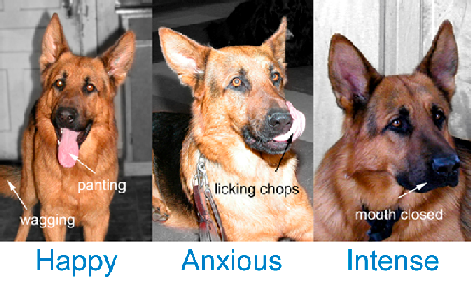Pet Behavioral Counseling at Pet Vet Hospital and Wellness Center in Spokane Valley, WA
Enhanced Pet Well-Being Through Behavioral Counseling in Spokane Valley, WA
At Pet Vet Hospital and Wellness Center, we recognize that every pet is unique, with their own set of behaviors and emotions. Our compassionate team understands the importance of addressing pet behavior issues to ensure their emotional well-being. Through our expert specialized behavior counseling services, we provide tailored solutions to manage anxiety, aggression, and phobias, fostering a harmonious relationship between you and your beloved pet.
Top 5 Dog Behavior Issues
Most experienced dog owners are familiar with common dog behavior problems, but some may wonder why dogs exhibit these behaviors. Dog owners often misunderstand and mishandle barking, biting, chewing, and many other common dog behaviors. Perhaps you are new to dog ownership, considering getting a dog, or just wish to better manage your dog’s behavior problems. Understanding the most common dog behavior problems is the first step to solving and preventing them. A solid foundation of obedience training will help you prevent or better control common dog behavior problems.

Barking
Most dogs bark, howl, and whine to some degree. Excessive barking is considered a behavior problem. Before you can correct barking, determine why your dog is vocalizing in the first place. These are the most common types of barking:
- Warning or alert
- Playfulness or excitement
- Attention-seeking
- Anxiety
- Boredom
- Responding to other dogs
Chewing
Chewing is a natural action for all dogs – it’s just a part of the way they are wired. However, chewing can quickly become a behavior problem if your dog causes destruction. The most common reasons dogs chew are as follows:
- Puppy teething
- Boredom or excess energy
- Anxiety
- Curiosity (especially puppies)
Provide plenty of chew toys to encourage your dog to chew on the right things. Keep personal items away from your dog. When you are not home, keep your dog crated or confined to an area where less destruction can be caused. If you catch your dog chewing the wrong thing, quickly correct them with a sharp noise. Then, replace the item with a chew toy. One of the most important things you can do is ensure your dog gets plenty of exercise!
Separation Anxiety
Separation anxiety is one of the most commonly discussed dog behavior problems. Manifestations include vocalization, chewing, inappropriate urination and defecation, and other forms of destruction that occur when a dog is separated from its owner. Not all of these actions are the result of separation anxiety. Signs of true separation anxiety include:
- The dog becomes anxious when the owner prepares to leave
- Misbehavior occurs in the first 15-45 minutes after the owner leaves
- The dog wants to follow the owner around constantly
- The dog tries to touch the owner whenever possible
True separation anxiety requires dedicated training, behavior modification, and desensitization exercises. Medication may be recommended in extreme cases, but this should be discussed with Dr. Clark to determine what is best for your dog.
Elimination
Inappropriate urination and defecation are among the most frustrating dog behaviors. They can damage areas of your home and make your dog unwelcome in public places or at the homes of others. It is essential that you discuss this behavior with Dr. Clark and Dr. Sanders first to rule out health problems. If no medical cause is found, try to determine the reason for the behavior, which can come down to one of the following:
- Submissiveness or excitement
- Territorial marking
- Anxiety
- Attention-seeking
- Lack of proper housebreaking
Inappropriate elimination is unavoidable in puppies, especially before 12 weeks of age. Older dogs are another story – many require serious behavior modification to rid them of the habit because you must often alter their perception of themselves.
Biting
Dogs bite for reasons traced back to instinct and pack mentality. Puppies bite and nip on other dogs and people as a means of exploring their environment and learning their place in the pack. Owners must show their puppies that mouthing and biting are not acceptable by teaching bite inhibition. Beyond puppy behavior, the motivation to bite or snap typically comes from the following:
- Fear or defensiveness
- Protection of property
- Pain or sickness
- Dominance assertion
- Predatory instinct
Though some breeds are thought to be dangerous, we believe that breed-specific legislation is not the answer. Owners and breeders are the ones who can help decrease the tendency for any type of dog to bite through proper training, socialization, and breeding practices.
4 Common Behavioral Issues
in Cats
We love our feline friends when they rub against our legs, knead our laps, or look us in the eye and purr. Yet, sometimes, we may not like everything about our four-footed friends — like when they streak through the house at 3 a.m. or reject a perfectly clean litter box.

Litter box issues
Talk to Dr. Clark first. Bladder stones, urinary tract diseases, and crystals in the urine are all reasons your cat might start avoiding the litter box. To rule out these and other health issues, be sure to have your cat checked by our trained staff at Pet Vet Hospital and Wellness Center.
- Have at least one litter box per cat. If your kitty has to stand in line before they can relieve themselves, they may decide to take their bathroom break elsewhere. Try testing out a few kinds of litter and litter boxes. Some cats prefer covered boxes, some don’t, and some cats prefer one litter over another.
- Always keep the litter box clean; even clumping litter has to be changed regularly. A rule of thumb is to clean the box at least once daily, or twice if there’s more than one cat in the house.
Scratching
It may seem like the kitty is scratching your couch and curtains to annoy you, but they’re doing it to work off energy, play, mark territory, and even get rid of frayed bits of the claw.
Good news: Scratching is easy to prevent, and you don’t have to settle for raggedy furniture or stop kitty from expressing their natural behavior. To prevent scratching damage:
- Buy one or more scratching posts for your cat, then dab a bit of catnip on the posts to entice your feline friend to use them.
- Trim your kitty’s claws. It may seem daunting, but trimming is easier than you think. Get a quick tutorial from our nurses, who can probably do the deed in 10 seconds.
- Turn your cat into a fashion plate with colorful claw caps (also called nail caps). These small, vinyl sleeves fit over the kitty’s claws, preventing them from doing damage when they scratch.
Cat aggression
A cat may become aggressive for various reasons, including illness, overcrowding, lack of socialization, maternal protection, and even simple play. To help you deal with aggression between cats:
- Discuss your cat’s aggression with Dr. Clark. Pain or sickness can put anyone in a bad mood, so you’ll want to rule out any physical causes for the kitty’s bad temper before you do anything else.
- Unfixed male cats are more prone to aggression than other cats, and it only takes one intact male to affect the behavior of all the other cats in your house. The solution is simple: spay or neuter your feline friends.
- If your furry household is often in a snit, it could be because there aren’t enough resources to go around. Keep the peace by ensuring enough litter boxes, food and water bowls, toys, beds, and perches, then spread them through the house to reduce congestion.
- You never want to hit an aggressive cat (it may lead to more aggression) but you do need to stop a catfight in progress. To do that, squirt the cats with water, make a loud noise, or toss something soft at them. Never try pulling fighting cats apart.
- If you or Dr. Clark cannot figure out why your kitty is being antagonistic, we can recommend an animal behaviorist who may be able to help you get to the source of your cat’s aggression.
Too much nighttime activity
Until their domestication, cats were nocturnal by nature, so it’s easy to see why too much nighttime activity is a common complaint of many new pet parents. To help the kitty who doesn’t understand that nighttime is for sleeping — not for playing with your nose — try these tips.
- First, make sure your cat has no medical problems. An agitated, active feline could be in pain, so talk to Dr. Clark or one of our staff if you think there might be something wrong.
- If the kitty is rambunctious at night, you can help them tire and relax with a good play session before bedtime.
- Ensure the kitty’s environment is enriched so there is plenty to do during the day, making your cat more inclined to sleep at night. You might create a cat enclosure, offer your cat a variety of toys, mount bird or squirrel feeders near a window out which the kitty can see, or leave out items for your cat to explore, such as boxes, bags, and packing paper.
- If your feline friend is the social sort, get them their own kitty companion to pal around with.
- Because cats tend to sleep after a big meal, feed your cat their main meal at night. You can also entertain them at the food bowl by purchasing a timed feeder that pops open at preset times. Your cat is entertained by watching their bowl and waiting for their snack at 3 a.m. while you’re in blissful dreamland.

